#miso paste
Text

Vegan lal chaman / लाल चमन (Kashmiri paneer dish)
Lal chaman, or lal paneer (लाल पनीर), is a dish consisting of shallow-fried cheese (paneer) in a water-based gravy thickened with ground fennel. It gets its name from the Hindi "lal," meaning "red." Some recipes achieve the dish's typical bright red color with the help of tomatoes, but this is a modern variation—for traditionalists, the dish should get all of its color from ground Kashmiri chilis. Lal chaman shares several common features with other Kashmiri dishes: the cooking oil used is mustard oil; due to influence from the Kashmiri Pandit community, it does not include garlic or onions; because fresh ginger was historically unavailable in Kashmir, it uses ground ginger.
This vegan recipe uses a glazed tofu to produce a chewy, cheesy paneer. The combination of chili, fennel, black cardamom, clove, and ginger produces a robust, earthy, mildly spicy base for the tangy 'cheese.'
Recipe under the cut!
Patreon | Tip jar
Ingredients:
For the paneer:
1 10-14oz block firm tofu
1 Tbsp apple cider vinegar
1 Tbsp white miso paste
½ tsp salt
Mustard oil, or other neutral oil, to fry
For the dish:
3 Tbsp mustard oil
2 Indian bay leaves (tej patta)
1 black cardamom pod (badi elaichi / moti elaichi)
3 cloves (loung)
2 1/2 tsp very finely ground fennel (saunf)
1 tsp ground ginger (sund)
1-2 Tbsp Kashmiri red chili powder (lal mirch)
Salt to taste
Pinch asafoetida (hing)
2” piece (3g) Ceylon cinnamon (dalchini)
1 1/2 cup (350mL) water
Essential to this dish are Kashmiri chili powder, fennel, and ginger, with clove and black cardamom also being near-ubiquitous. Other frequent inclusions are hing, bay leaf, cinnamon, coriander, green cardamom, and garam masala, as well as tomato puree and even yoghurt.
Kasmiri red chili powder is relatively mild in heat but vibrant in color; it can be found in a halal or Asian foods store, labelled “Kashmiri chilli powder” or “mirchi.” You can also remove the stems and seeds of dried Kashmiri chilis and grind them into a powder yourself. Made with 1 Tbsp chili powder, the dish is to my taste very mild; however, if you don't tolerate spice well you may replace some of the chili powder with paprika. If you can't find Kashmiri chili powder, replace it with 1 part ground guajillo or cayenne to 3 parts sweet or smoked paprika.

Indian bay leaves are distinct from Turkish or California laurel bay leaves and have a different taste and fragrance. They will be labelled “tej patta” in an Asian or halaal grocery store, and have three vertical lines running along them from root to tip, rather than radiating out diagonally from a central vein. Omit these if you don’t have any.
When testing this recipe, I found that the fennel had to be very finely ground for it to have the necessary thickening quality for this dish. If you’re grinding fennel from seeds, be sure to be very thorough.

Note that asafoetida may not be gluten free, depending on whether it is cut with flour.
Instructions:
1. Cut tofu into pieces 2" x 2" x 1/2" (5cm x 5cm x 1cm) in size. Whisk vinegar and miso paste together in a large bowl until well combined, then add tofu pieces and mix gently to coat.

2. Heat 1/4" (1/2cm) mustard oil in a large pan on medium. Add tofu and fry, turning once, until deep golden brown on all sides.

Typically paneer would be kept in water to avoid drying out at this stage, and paneer soaking water would be added later in the cooking process. I haven’t found this necessary or helpful with tofu.
3. Remove most of the oil from the pan, leaving 3 Tbsp to 1/4 cup. Add hing and allow to sizzle briefly. Add whole spices (black cardamom, cinnamon, bay leaf, cloves) and fry for a minute until fragrant.
4. Mix mirchi with a couple tablespoons of water. Reduce heat to low and add mirchi paste; fry for 30 seconds until fragrant. Add ground fennel and ginger and stir until well-combined; the mixture should begin to thicken. Continue frying until the water has evaporated out and colored oil begins to sizzle around the sides of the mixture.
5. Add 1 1/2 cup (350mL) water and salt to taste and raise heat to bring to a boil. Reduce heat and simmer for 10 minutes, uncovered, until thickened (a spatula pushed along the bottom of the pan should make a track that holds for several seconds). Add paneer and optionally simmer for another couple of minutes. Serve with rice.
The dish will look duller at first; the bright red colour appears when it is allowed to rest and a layer of red oil rises to the surface.
#vegan cooking#vegan recipes#recipes#Indian#Kashmiri#tofu#miso paste#Kashmiri chili powder#gluten free
57 notes
·
View notes
Text
I was asked to cook lunch (and dinner again later) despite it being a Monday, a little treat! I feel like cooking gives me a +3 Morale Boost.
Today I made Honey Barbecue and Garlic Butter Fried Chicken


And Miso Glazed Grilled Japanese Bottle Gourd (it was supposed to be an eggplant but we ran outta those so bottle gourd will do for today)!💖

#cococaffeinatedlife#miso paste#fried chicken#i wish i had a pantry that never went out of stock#i really love cooking#its one of those skills or hobbies i have that ill never want to monetize least i grow bitter over it like i am with my art
3 notes
·
View notes
Text
Creamy Miso Pasta
Preparation time: 10 minutes
Cooking time: 5 minutes
Makes/Serves: 1-2
Ingredients
1 tbsp red or white miso paste
2 tbsp butter
1/3 cup macaroni or other short pasta, cooked & drained
1/3 cup pasta water
dash of garlic powder
1/2 cup cheese
(optional) 1/2 cup diced cooked chicken
Method
In a small saucepan over a low-medium heat, whisk together the miso paste, garlic powder, butter, and pasta water until the miso paste is dissolved completely.
Still whisking, slowly add in the cheese and combine until smooth.
Remove from heat and stir through pasta and chicken.
Enjoy
Notes:
I'm lactose intolerant, so the cheese and butter I used were dairy free and worked really well.
You can leave out the chicken for a vegetarian option and miso is vegan, so if you want to use the substitutes like I did, it'd be super easy to make this dish vegan friendly.
The pasta I used was also gluten-free, and thankfully miso is also a gluten-free food, so that's another easy substitute to make.
This was definitely a trust the process recipe. I found a few similar ones online and knew I needed to use up some of the miso paste I had in the fridge. Do what I say, not what I do, and taste your dishes when you're cooking them, especially for the first time. I was in a rush and had no idea what my lunch tasted like as I threw it in a container and ran out the door. I'm so glad it worked out as well as it did.
#mine#recipe#lunch#dinner#pasta#pasta recipe#vegetarian#vegan#gluten free#dairy free#nut free#egg free#basic#basic recipe#low fodmap#miso#creamy miso pasta#miso recipe#miso paste#easy recipe#easy pasta recipe#food#foodblr#cookblr#cooking#food blog#recipe blog#recipes#recipies
58 notes
·
View notes
Text
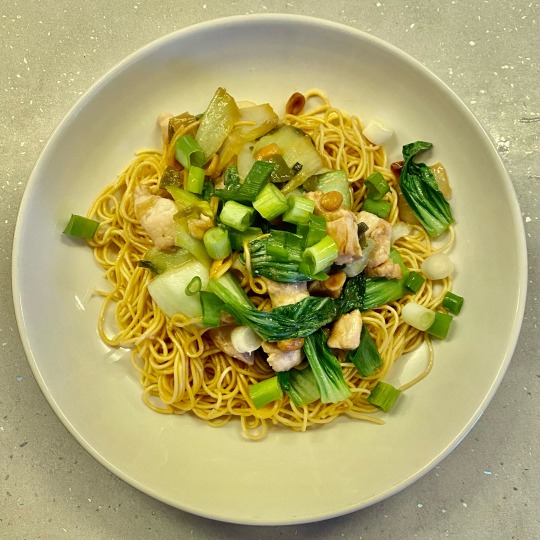
Honey miso peanut chicken stir fry…..
9 notes
·
View notes
Text

I'm fascinated by the Korean pottery technique called Boseong Deombeongyi, which is a unique style of pottery that emerged between 1470 and 1500 by Korean potters during the early Joseon Dynasty, the last kingdom of Korea. I decided to make this wide shallow porcelain crackle tea cup inspired by this technique.
I also prepared a beautiful decoration from tofu cheese, sea moss and miso paste and enjoyed some gyokuro green tea.
It was a delightful and aesthetic experience. I highly recommend you to try something like this.
#tofu#miso paste#handmade pottery#ayakiceramics#Ayaki ceramics#tea cup#gyokuro#green tea#comfort food
3 notes
·
View notes
Text

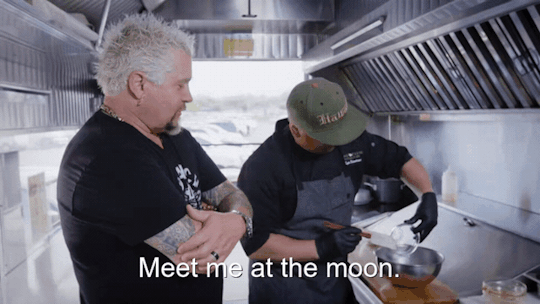

[Miso paste, soy, saké. Meet me at the moon. [ Laughs ] Sugar...]
5 notes
·
View notes
Text

Japanese Curry
#onion#fresh garlic#carotts#potatoes#italian sausage#snow peas#turmeric#miso paste#glico curry#chez kazu#food#japanese curry#apple#happier life#grateful
27 notes
·
View notes
Text

#vegan#veganfood#veganfoodporn#miso paste#miso soup#vegtables#ramennoodles#ramenporn#ramensoup#ramen
6 notes
·
View notes
Text
Miso from Jaoan
#miso#noodle#theramenrater#food#instant noodles#noodles#soup#instant#instantnoodles#japan#ramen#misophonia#miso paste#misogny#miso moodboard#salad#naomi misora#potato#carrots#cauliflower#peas
2 notes
·
View notes
Text
Vegetarian “Clam” Chowder
Chef’s Notes: Thick soup once it gets the cream. Mushrooms are the “clams”. And it’s actually really cool the idea of this. And the starchy water is important for even more thickening and flavor. You could use an alternate milk, but I think it’ll add unnecessary flavors into it.
Ingredients
Soup
2 tbsp + 2 tbsp vegan butter, divided
1 tbsp extra-virgin olive oil
1 lb cremini mushrooms, sliced
Kosher salt
1 medium yellow onion, chopped
2 medium carrots, thinly sliced into rounds
4 garlic clove, minced
1 tbsp miso paste (I used white miso)
1/2 cup white wine
2 cup water
2 lb Yukon gold potatoes, peeled and chopped into roughly ¾-inch cubes
1 bay leaf
1/2 tsp dried thyme, to taste
Chopped parsley leaves, for serving
oyster crackers, for serving
Cream Sauce
2 large russet potatoes, peeled and chopped
1 tsp salt
2 cup of potato water
1/2 cup powdered milk (or however much it takes to make 2 cups)
If you want to be vegan, use 2 cup nut milk instead of the water+milk
Instructions
1. In a medium pot, melt 2 tablespoons of the butter over medium-high heat.
2. Add oil and mushrooms and season with salt. Cook, stirring occasionally, until mushrooms are tender and any liquid they’ve given off has evaporated, about 5 minutes.
3. Transfer mushrooms to a plate.
4. Melt remaining 2 tablespoons of butter over medium heat. Add onion and carrot and cook, stirring occasionally, until onions are softened, about 3 minutes.
5. Add garlic and cook, stirring, until lightly toasted, about 2 minutes.
6. Stir in miso.
7. Add wine to pot and increase heat to medium-high. Bring to a boil and cook until wine evaporates, about 3 minutes.
8. Add water, Yukon potatoes, and bay leaf to the pot. (There should be just enough water to cover potatoes; add a little more as needed.) Season with salt and bring to a boil. Cover pot, reduce heat to medium, and simmer until potatoes and carrots are tender, about 10 minutes.
Continue cooking while this simmers. Turn heat to low and do a very low simmer once vegetables are tender.
9. In a small saucepan, cover russet potatoes with at least 1 inch of water. Season with 1 teaspoon salt and place over medium-high heat. Bring to a boil, reduce heat to medium, and cook until potatoes are very tender, about 7 minutes. Drain.
10. Transfer cooked russet potatoes to a blender. Add almond milk. Puree until smooth.
11. When soup vegetables are tender, uncover the pot, remove bay leaf. Add potato cream, mushrooms, and dried thyme; stir to combine. Season with salt and thyme to taste.
12. Ladle soup into bowls and top with parsley and oyster crackers.
#soup#clam chowder#vegetarian#stovetop#butter#olive oil#cremini mushroom#salt#yellow onion#carrot#garlic clove#miso paste#white wine#bay leaf#yellow potato#Yukon potato#dried thyme#parsley#oyster cracker#russet potato#milk#powdered milk
0 notes
Text

Vegan pork and apple gua bao with pickled carrots
"Gua bao" (literally, "cut bread") consist of a savory filling--usually pork belly with condiments and toppings--in a fluffy, steamed "lotus leaf bun." Other types of bao include baozi, which are sealed shut around their filling (this type of bao is usually meant when the term "bao" is used without any qualifiers). The term "bao bun" is actually an example of the kind of tautology common in bilingual borrowing, since "bao" already means "bun"!
In my take on this dish, a classic pork-and-apple filling is transformed by the addition of miso paste and a hit of fruity, floral Sichuan peppercorn. The sweetness and acidity of pickled carrots stand out wonderfully against the background of the savory, umami filling. For the filling base you may use any type of vegan pork substitute, or TVP.
Recipe under the cut!
Patreon | Tip jar
Makes 12 bao.
EQUIPMENT:
A large skillet
A grater or food processor
A bamboo or metal steamer, or a wok / large, deep pan / large pot, with a closely fitting lid
Parchment paper
INGREDIENTS:
For the bao:
1 1/2 cup (300g) all-purpose flour
1 Tbsp (9g) cornstarch
1 tsp (4g) active dry yeast
1 tsp (6g) sugar
1 Tbsp neutral oil
About 2/3 cup (140 ml) lukewarm water
For the filling:
380g (13oz) vegan sausage, or 200g TVP hydrated with 140mL vegetarian pork or beef broth from concentrate
1/2 medium tart apple, washed and cored
1 small yellow onion
1 stalk celery (optional)
2 tsp white miso paste
1 tsp soy sauce
1 1/2 tsp vegetarian oyster sauce
1 tsp honey or agave (optional)
1/2 tsp Sichuan peppercorns, toasted and ground
1/4 tsp fennel seeds, toasted and ground
1/4 teaspoon salt
1 Tbsp neutral oil
4 cloves garlic, sliced
1-inch chunk (10g) ginger, washed (no need to peel)
1 tsp rice vinegar
For the pickled carrots:
3 medium carrots (180g)
1/4 cup white vinegar
1/4 cup rice vinegar
2 Tbsp sugar
1/2 tsp salt
To steam and assemble:
1 Tbsp neutral oil
Romaine lettuce, chopped peanuts, or other desired toppings
INSTRUCTIONS:
For the pickled carrots:
1. Julienne three carrots and stuff them down into a medium-sized jar.
2. Combine white and rice vinegar with salt and sugar in a small pot and heat, whisking occasionally, until vinegar is simmering and sugar is dissolved.
3. Pour vinegar into the jar over the carrots. Allow to cool completely to room temperature (glass risks breaking if subjected to rapid changes in temperature) and refrigerate for several hours, or overnight.
For the bao:
Bao should be light, fluffy, and chewy. The dough for the bao is kneaded, proofed, kneaded again, shaped, and proofed a second time before the bao are steamed.
1. Whisk flour, cornstarch, yeast, and sugar together in a large bowl. Add oil and mix to combine.
2. Add water a little at a time until the dough holds together in a smooth, non-sticky ball. You may need more or less than 2/3 cup.
3. Vigorously knead the dough on a lightly floured surface for about ten minutes until very smooth, or use a stand mixer with a dough hook attachment on medium speed for five to seven minutes. An insufficiently kneaded dough may lead to a pockmarked texture later on!
4. Transfer the dough to a lightly greased bowl and cover with a kitchen towel that's been dampened with warm water. Allow to rise for 40-90 minutes, until just doubled in size. Avoid overproofing the dough.
For the filling:
1. While the dough proofs, prepare your filling. Mix miso paste, soy sauce, oyster sauce, and agave in a large bowl. Grate the onion, garlic, ginger, sausage, apple, and celery, or pulse in a food processor, occasionally scraping down the sides with a rubber spatula, until a coarse crumb texture forms.
2. Heat 1 Tbsp of a neutral oil in a large pan on medium high. Add ground Sichaun peppercorns and fennel and allow to bloom for 30 seconds until fragrant.
3. Add sausage mixture and cook until browned, flipping once. Once cooked, remove the filling to the bowl with your sauce mixture.
4. Deglaze the pan with 1 tsp or so rice or white vinegar, and add any bits that had burnt and stuck to the bottom into the bowl with the rest of your filling. Mix to combine.
To steam the bao:
1. Turn the dough out onto a lightly floured surface and knead for another five minutes, until dough returns to its original size and appears very smooth in texture.
2. Roll dough out into a large cylinder and, using a bench scraper or a sharp knife, separate it into twelve even pieces. If you have a kitchen scale, you can use it to ensure that your pieces are all the same size--mine ended up weighing about 40g each.

3. Roll each piece of dough out into an oval of about 4" x 7" (10 x 18cm), covering the pieces you're not working with to prevent them from drying out. The dough should be moderately thin (4-5mm) without being translucent.
4. Lightly brush the top of the dough oval with a neutral oil and fold the dough over lengthwise to form a semi-circular shape. Place each shaped bun in a parchment-paper-lined bamboo steamer, or on a similarly prepared plate. (If you don't have a steamer, choose a plate or plates that will fit inside a wok or large pot--see steaming instructions.)
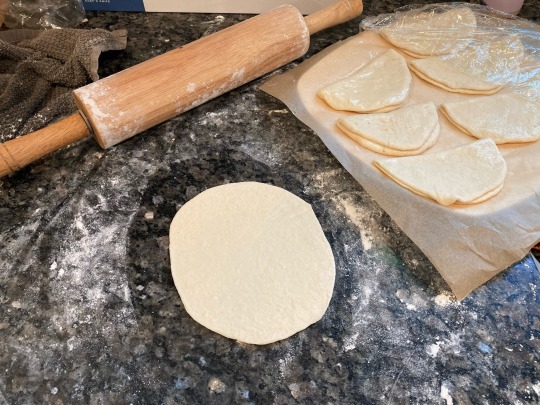
5. Allow the shaped buns to rise for another 20 minutes until slightly puffy. They will rise further while steaming.
6. Steam the bao. Place your bamboo steamer in the bottom of a wok or large pot, and fill the wok with enough cool water to cover the bottom rim of the steamer by 1/2". If you're using a metal steamer, tie a kitchen towel around its lid to prevent condensation from dipping back down onto the bao, which would jeopardize their rise and texture. If you don't have a steamer, place a small bowl in the bottom of a wok or large, deep pan or pot. Place the plate containing your bao on top of the bowl--the plate should fit inside your pot. Make sure that you can cover the plate and bao with a lid and leave some room to rise without the bao making contact with the lid. If your lid is domed, there is no need for a kitchen towel, since the condensation will run down towards the outer rim. If your lid is flat, tie a tea towel around it just as you would with a metal steamer. Fill your cooking vessel with 2 or so centimeters of cool water.
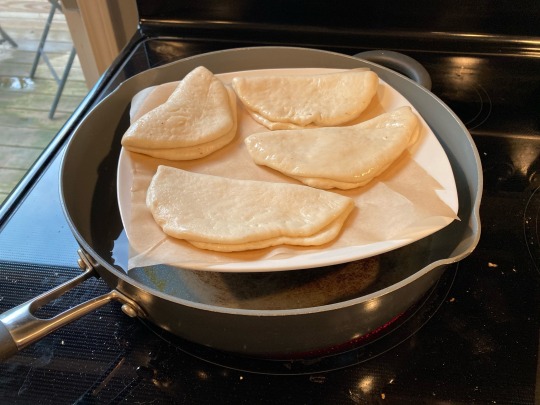
7. Raise the heat to high and allow the water to come to a boil. Once boiling, lower the heat to medium-low and cover your steamer or pot. Allow bao to steam for eight minutes and remove from the steamer (there is no need to wait five minutes to avoid collapsing, as some recipes suggest!).
To assemble:
1. Reheat filling in a large skillet. Serve lotus leaf buns alongside filling, lettuce, carrots, chopped peanuts, and other toppings and fill as desired.
#vegan cooking#vegan recipe#cooking#bao#gau bao#TVP#sausage#apple#celery#carrot#lettuce#miso paste#Chinese American
71 notes
·
View notes
Text
SlowCooking Recipe - Slow Cooker Miso Pork and Rice Bowl

This Slow Cooker Miso Pork and Rice Bowl is a savory and filling meal ideal for a busy weeknight. The pork is infused with umami-rich goodness after being cooked in a flavorful miso and soy sauce mixture. For a delicious and healthy meal, serve it over fluffy white rice and top with fresh green onions and cilantro.
0 notes
Text
Miso Soup - Soup Recipe
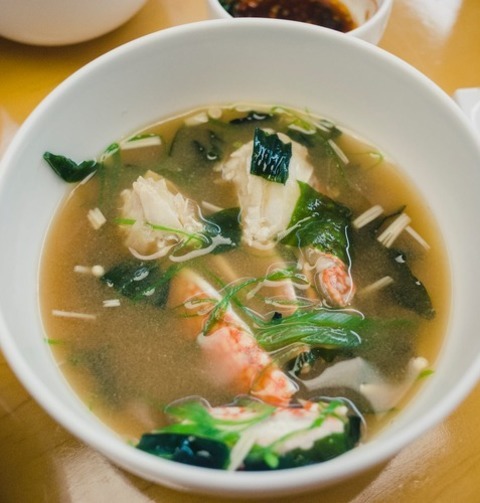
Miso Soup. Miso soup is a traditional Japanese soup made with miso paste and dashi stock. It is typically served as a side dish or as a light lunch. This recipe is quick and simple to prepare, making it ideal for a busy weeknight dinner.
0 notes
Text
Miso Fish Soup Recipe
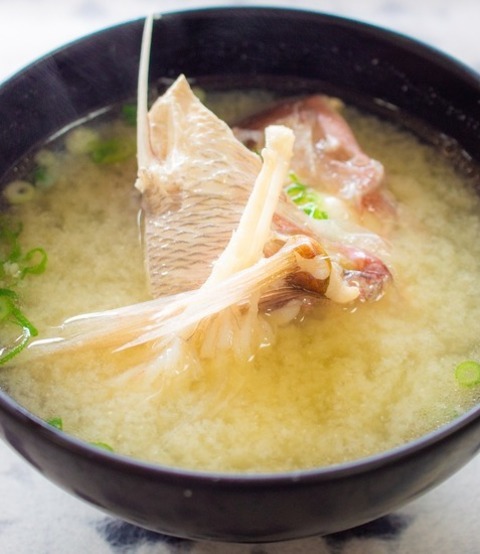
Miso Fish Soup is a flavorful and nutritious soup that is simple to prepare. Miso, fish, and vegetables combine to make a savory broth that is both delicious and nourishing. This dish is ideal for a light lunch or dinner.
0 notes
Text


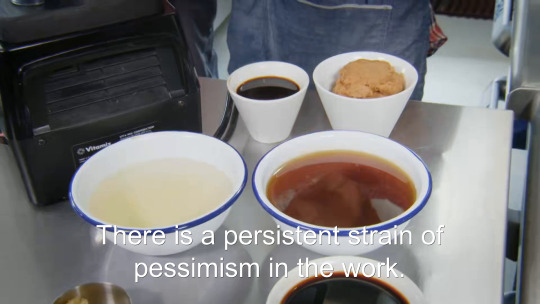


[It's light and refreshing with a lot of zest to it. Talk to me, sister. There is a persistent strain of pessimism in the work. Miso paste, honey, sesame oil, canola oil, tamari, rice wine vinegar, garlic, ginger.]
#s27e02 flavor adventure#guy fieri#guyfieri#diners drive-ins and dives#rice wine vinegar#persistent strain#miso paste#sesame oil#canola oil#lot#zest#sister#pessimism#work#honey#tamari#garlic#ginger
3 notes
·
View notes
Text
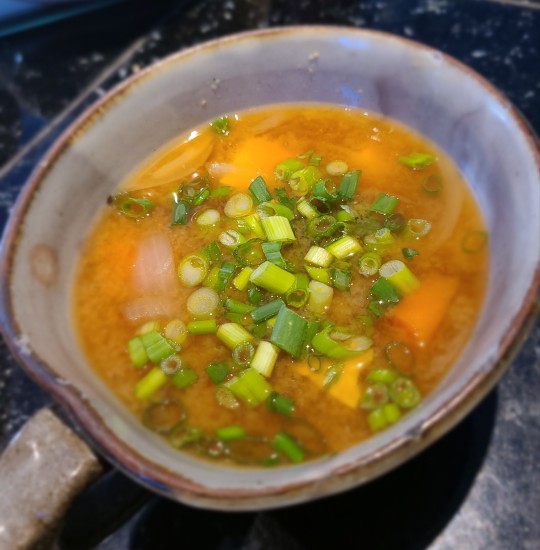
Miso Soup
#onion#carotte#soft tofu#dashi#miso paste#spring onion#chez kazu#food#healthy#miso soup#happier life#thank you
5 notes
·
View notes